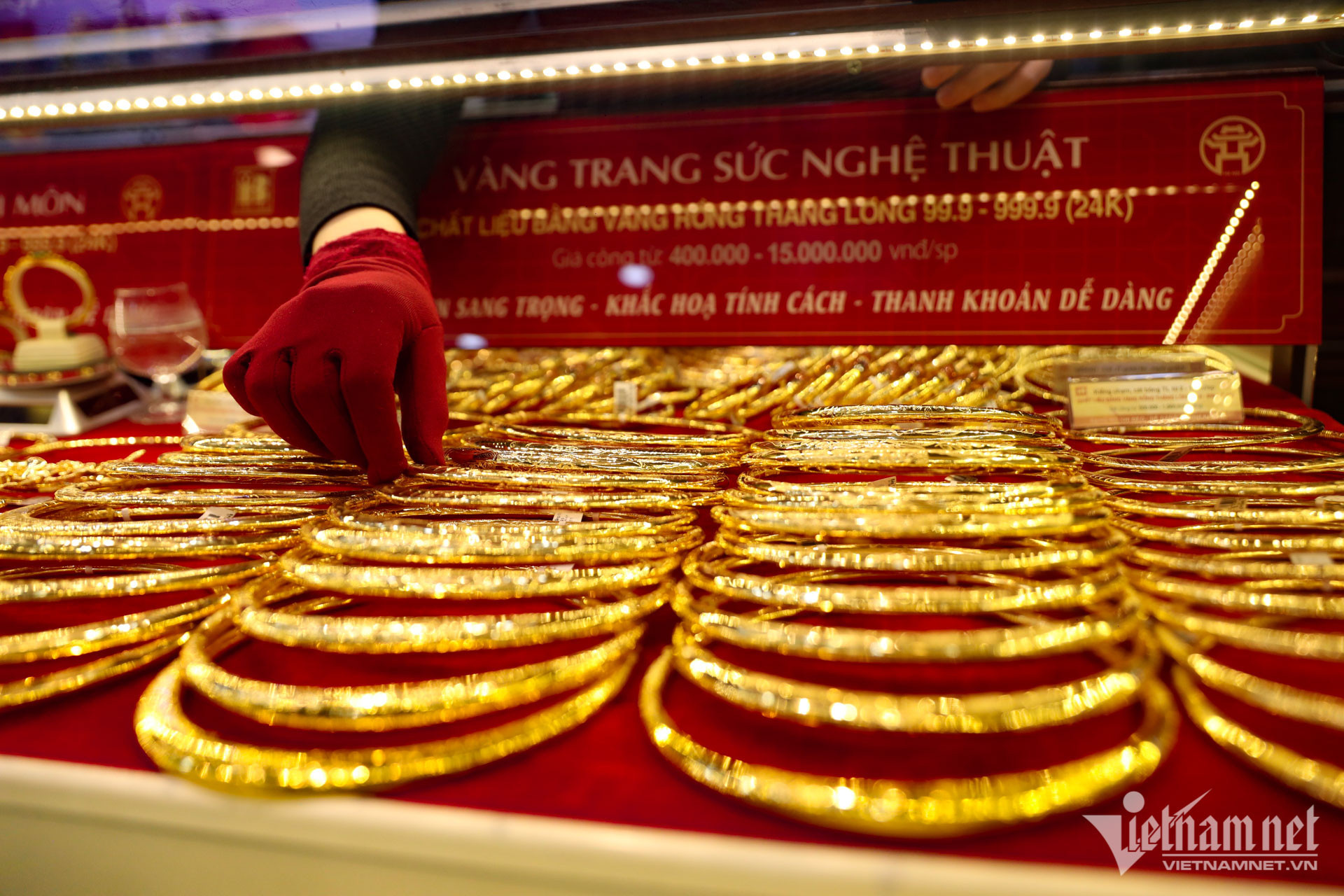
Since 2012, the domestic gold market has been regulated by Decree 24 on gold business management, under which enterprises and credit institutions are not allowed to import gold. This aims at stabilizing the dong/dollar exchange rates and limiting the production of gold bars for investment and hoarding.
The State Bank of Vietnam (SBV) also prohibits commercial banks from mobilizing, lending, or using gold as an asset on their balance sheets. Gold businesses have complied with state regulations on trading gold bars and focused on developing gold jewelry and handicraft production as guided by the SBV.
Experts note that when the gold market was unstable, affecting macroeconomic conditions and monetary policy, Decree 24 was necessary. After its implementation, the domestic gold market stabilized, with "gold price fever attacks" subsiding, and gold no longer used as a payment method.
However, after over 12 years of Decree 24, new issues have emerged in the gold market. The price gap between domestic gold (mainly SJC gold bars) and global gold prices has been very high, at times reaching nearly VND20 million per tael.
Since 2023, experts have repeatedly suggested amending Decree 24. The fact that SJC has been the sole national bullion gold brand for many years has created a monopoly, becoming the main reason for the unreasonably high domestic gold price compared to global prices.
However, to date, the decree has not been amended.
Recently, the PM has requested the SBV to revise Decree 24 to be more concise, aligned with the current situation; the work must be completed within June.
The Party Chief To Lam has also requested to eliminate the state monopoly on bullion gold production and import.
Contributing ideas to the draft of the revised Decree 24, VGBA has proposed that jewelry producers and exporters should be prioritized to import raw gold with no limitation on quantity.
The businesses just would need to report to competent agencies about their imports. The state should support market research and expansion for gold jewelry exports.
The association affirmed that Vietnamese gold production enterprises can meet domestic demand and export products to the global market, with over 25 percent of export value coming from labor. This is a unique characteristic of the gold industry.
"Although foreign currency is used to import raw gold, it serves as input for production. After crafting into gold jewelry, exports (including on-site exports) can recover the foreign currency spent. This addresses concerns about whether importing raw gold affects foreign exchange reserves," the association's document states.
“Therefore, though foreign currencies must be used to import raw gold, it is an input material for production. After production and export (including on-site export), the foreign currencies will come back, while new sources of foreign currencies can be generated.”
This is also the answer to the question of whether allowing the import of raw gold will affect foreign exchange reserves.
The association cited the General Statistics Office as saying that foreign currency amount spent on importing consumer goods like cosmetics, tobacco, and alcohol is far higher than that for raw gold imports.
In 2024, the SBV spent nearly $1.4 billion to import about 13.5 tons of raw gold for SJC gold production. This amount accounted for only 0.3 percent of the country's total import turnover of $380.76 billion in 2024 and 5.7 percent of the $24.33 billion spent on consumer goods imports.
The association estimates the demand for raw gold for producing gold bars and jewelry at about 50 tons per year, worth roughly $5 billion annually (about $416 million per month). After production, half is for domestic demand, and another half for export. The gold jewelry exports could generate $3.5-4 billion.
The association calculates that the need to purchase foreign currency for raw gold imports, at USD5 billion per year (about $416 million per month), is minimal compared to the daily foreign exchange trading volume in the interbank market, ranging from USD900 million to 1.2 billion per day, or USD18.9 to 25.2 billion per month.
It also pointed out that $416 million a month is a very small amount compared with the $900 million-1.2 billion/day foreign currency trading value in the interbank forex market, or $18.9-25.2 billion a month.
Manh Ha